Economic Development (Part 1): July 2025 UPSC Current Affairs | Indian Economy for UPSC CSE PDF Download
Dorjilung Hydropower Project
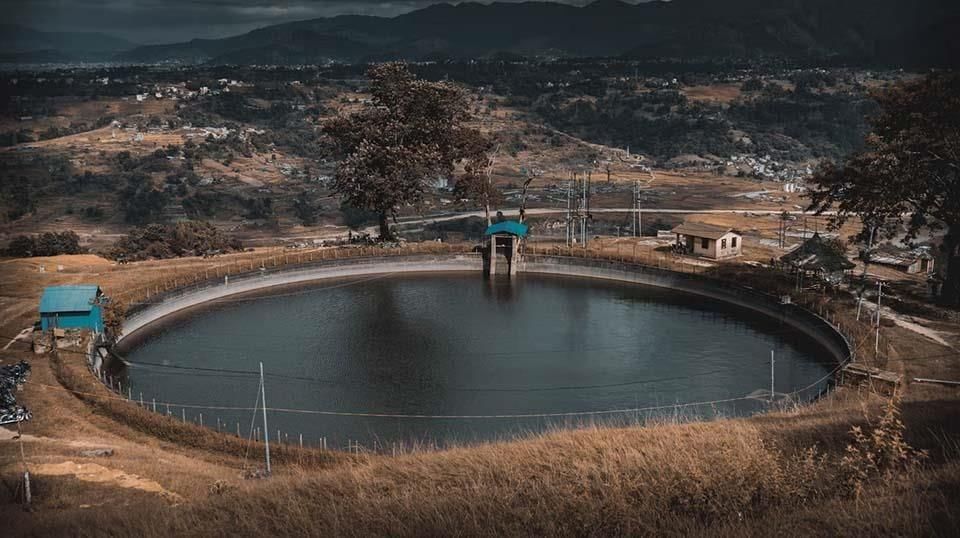 Why in News?
Why in News?
The initiation of infrastructure work on Bhutan's Dorjilung Hydropower Project marks a significant step in enhancing India's private-sector involvement in cross-border renewable energy initiatives.
Key Takeaways
- The project aims to harness a capacity of 1125 MW using a run-of-river design.
- It is located in the eastern Lhuentse and Mongar Districts of Bhutan along the Kurichhu River.
- The total estimated investment for the project is approximately $1.7 billion, supported by financing from the World Bank.
- An MoU was signed in November 2024 between Bhutan's Druk Green Power Corporation (DGPC) and Tata Power, under a Public-Private Partnership (PPP) model.
- The expected commissioning date is early 2032.
Additional Details
- Project Specifications: The Dorjilung project will feature a concrete-gravity dam that channels nearly 287 m³/s through a 15 km headrace tunnel leading to an underground powerhouse equipped with six Francis turbines. This setup is designed to generate around 4.5 terawatt-hours (TWh) annually.
- Stake Distribution: Under the PPP model, DGPC will hold a 60% stake in the project, while Tata Power will own the remaining 40%.
- The project is positioned to enhance India-Bhutan energy ties significantly.
The Dorjilung Hydropower Project not only represents a critical investment in renewable energy but also showcases the growing collaboration between India and Bhutan in the energy sector.
Skill Impact Bond
Why in News?
The Skill Impact Bond (SIB) has been recognized by the Minister of State for Skill Development and Entrepreneurship for its measurable social impact in improving employment outcomes for young people.
Key Takeaways
- The Skill Impact Bond is an innovative financing tool aimed at enhancing employment opportunities.
- Launched in November 2021, it is India's first development impact bond specifically focused on employment.
- The initiative aims to benefit 50,000 young Indians, with 60% of the beneficiaries being women.
Additional Details
- Funding Structure: The SIB employs private sector capital to provide funding to service providers who deliver skills training and job placement support.
- Outcomes-based Financing: The program prioritizes job placement and retention over mere training and certification.
- Risk Investors: These are typically private sector entities that finance the program.
- Outcome Funders: They repay the risk investors based on the success of meeting employment targets.
- Third-Party Evaluator: An independent evaluator verifies the employment outcomes achieved by the program.
The Skill Impact Bond represents a strategic approach to fostering employment among young people in India, focusing on practical outcomes rather than just educational certifications.
India Rethinks China Blockade to Boost Tech Manufacturing
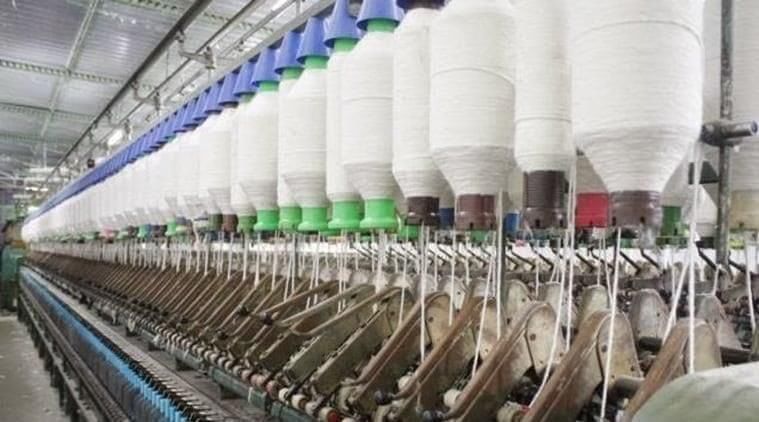 Why in the News?
Why in the News?
India is reassessing its previously strict policies regarding Chinese investments in electronics manufacturing. This shift aims to enhance domestic production capabilities and better integrate into global supply chains.
Key Takeaways
- India is signaling a change in its restrictive stance towards Chinese investments in light of its electronics manufacturing ambitions.
- Recent developments suggest a pragmatic openness to Chinese participation in select sectors.
- India continues to rely heavily on Chinese components, despite previous restrictions.
Additional Details
- Background of the Blockade: In April 2020, India implemented Press Note 3, requiring government approval for all FDI from countries sharing a land border with India, primarily targeting Chinese investments. This policy was intended to prevent opportunistic takeovers during the COVID-19 pandemic.
- Emerging Signs of Policy Recalibration: Recent approvals, such as Dixon Technologies forming a joint venture with China-based Longcheer, indicate a shift towards welcoming Chinese expertise in manufacturing.
- Dependency on Chinese Components: In FY2023-24, India imported over $12 billion worth of electronic parts from China, demonstrating a significant reliance on Chinese suppliers for its assembly operations.
- Policy Drivers Behind the Rethink: Key factors influencing India's change in policy include aspirations to become a global electronics hub, the need for foreign collaboration in manufacturing, and the realignment of global supply chains.
- Challenges and Repercussions: India faces challenges such as potential retaliation from China, including difficulties in importing capital goods and a need to balance strategic autonomy with manufacturing dependency.
This reassessment of the blockade reflects India's commitment to fostering a robust electronics manufacturing ecosystem while navigating complex geopolitical realities.
India's Insurance Sector - Projected Boom and Structural Shifts by 2030
Why in News?
India's insurance industry is set for significant growth, with Gross Written Premiums (GWP) anticipated to rise by 123% by 2030. This growth is attributed to evolving consumer behaviors, heightened insurance awareness, and structural changes in both retail and institutional segments. These insights are derived from a collaborative report by the Insurance Brokers Association of India (IBAI) and McKinsey & Company, which is further validated by the IBAI Insurance Insights Survey involving 2,500 retail customers.
Key Takeaways
- GWP is projected to increase from ₹11.2 lakh crore in 2024 to ₹25 lakh crore by 2030.
- Insurance penetration is expected to rise from 3.7% in 2024 to 5% by 2030.
- The retail segment will see substantial contributions from life insurance, while the institutional segment will focus on non-life insurance growth.
Additional Details
- Gross Written Premiums (GWP): GWP represents the total premium revenue collected by insurers from policies issued over a specific period, before any deductions. The anticipated growth signifies a robust increase in the total volume of insurance premiums.
- Insurance Penetration: This metric, defined as the ratio of total insurance premiums to a country's GDP, is expected to approach the global average of 6.8% by 2030.
- Retail Segment Insights: By 2030, retail GWP is expected to reach ₹21 lakh crore, primarily driven by life insurance. A significant opportunity exists among Ultra and High Net-Worth Individuals (UHNI and HNI) who represent 65% of the market potential.
- Institutional Segment Opportunities: Institutional GWP is projected to triple to ₹2.8 lakh crore by 2030, with the SME sector expected to become a key growth driver despite current low penetration.
This projected boom in the insurance sector highlights essential areas for regulatory reform and customer-centric innovations, which are crucial for enhancing insurance literacy and improving claims processes, particularly among SMEs and lower-income segments.
Financial Inclusion Index: FY 2025 Update
Why in News?
The Reserve Bank of India has announced that the Financial Inclusion Index (FI Index) for the Financial Year 2025 has improved to 67 percent, up from 64.2 percent in the previous fiscal year, FY 2024. This increase indicates a positive trend in financial inclusion across various sectors in India.
Key Takeaways
- The FI Index has risen from 64.2% in FY 2024 to 67% in FY 2025.
- The index is a comprehensive measure that includes data from banking, investments, insurance, postal services, and pensions.
Additional Details
- Financial Inclusion Index (FI Index): This index was conceptualized to provide a comprehensive overview of financial inclusion in India. It ranges from 0 to 100, where 0 indicates complete financial exclusion and 100 represents full financial inclusion.
- The FI Index comprises three broad parameters:
- Access (35%): Evaluates the availability of financial services.
- Usage (45%): Measures how effectively financial services are utilized.
- Quality (20%): Assesses the quality of financial services, including aspects like financial literacy and consumer protection.
- The index is calculated based on 97 indicators, reflecting the cumulative efforts of various stakeholders aimed at enhancing financial inclusion.
- The FI Index is published annually in July, showcasing the progress in financial inclusion over the years.
In conclusion, the improvement in the Financial Inclusion Index indicates significant progress in making financial services accessible and usable for a larger segment of the population, which is crucial for economic growth and development in India.
What are Stable Coins?
Why in News?
The US House of Representatives has recently passed the Genesis Act, which aims to regulate US dollar-pegged stablecoins, highlighting the growing importance of stablecoins in the financial landscape.
Key Takeaways
- Stablecoins are cryptocurrencies whose value is pegged to other assets like fiat currencies or gold.
- They aim to reduce the volatility associated with cryptocurrencies, making them more suitable for everyday transactions.
- There are three main types of stablecoins: fiat-collateralized, crypto-collateralized, and non-collateralized (algorithmic).
Additional Details
- Definition: Stablecoins are a type of cryptocurrency designed to maintain a stable price by being pegged to an asset, such as a fiat currency or commodity. They are intended to provide a less volatile option in the cryptocurrency market.
- Types of Stablecoins:
- Fiat-Collateralized: These stablecoins are backed by reserves of fiat currency. For example, one US dollar might equal one stablecoin, secured by actual dollar reserves held by the issuer.
- Crypto-Collateralized: These stablecoins are backed by other cryptocurrencies. They often require over-collateralization to account for the volatility of the backing assets.
- Non-Collateralized (Algorithmic): These stablecoins use algorithms to control the supply based on market demand, without backing by any physical assets.
- While stablecoins aim for price stability, their value can fluctuate in secondary markets, and there may be no guarantee that reserves are adequate to cover all redemptions.
In conclusion, stablecoins represent a significant development in the world of digital currencies by providing a bridge between traditional finance and the volatile crypto market, although their stability is not guaranteed.
Bima Sakhi Yojana
Why in News?
The Life Insurance Corporation of India (LIC) has recently signed a Memorandum of Understanding (MoU) with the Department of Rural Development under the Union Ministry of Rural Development. This agreement aims to enhance the outreach of the Bima Sakhi Yojana in rural regions, focusing on empowering women through a structured training and support system.
Key Takeaways
- The Bima Sakhi Yojana is an initiative by LIC aimed at promoting financial literacy among women.
- Women aged between 18 and 70, who have completed at least Class X, are eligible to participate.
- Participants receive specialized training and a stipend for the initial three years to support their development as LIC agents.
- The programme aims to appoint two lakh Bima Sakhi within three years.
Additional Details
- Eligibility Criteria: Women must be aged between 18 and 70 and have passed the 10th grade. Preference is given to those residing in rural areas.
- Stipend Structure: Participants will receive a monthly stipend of ₹7,000 in the first year, ₹6,000 in the second year, and ₹5,000 in the third year.
- Commission: Bima Sakhis will earn a commission of ₹48,000 (excluding bonuses) in their first year after training.
- Women related to existing LIC agents or employees, including spouses, children, and siblings, are ineligible to apply.
- Retired LIC employees and existing LIC agents cannot participate in the scheme.
The Bima Sakhi Yojana represents a significant step toward enhancing women's empowerment in rural areas by providing them with the tools and resources needed to become financially independent and literate.
Why Food Inflation May Remain Low
Why in News?
India's consumer price index (CPI) inflation dropped to 2.1% in June, which is lower than the inflation rates in the US (2.7%) and the UK (3.6%). Notably, food inflation in India decreased by 1.1%, contrasting with increases of 3% in the US and 4.5% in the UK. This development marks the lowest retail and food inflation levels since January 2019, offering significant relief to the Reserve Bank of India, which faced high inflation rates throughout 2023-2024. The turnaround is attributed to a surplus monsoon in 2024, resulting in bumper kharif and rabi harvests that eased food prices from early 2025.
Key Takeaways
- India's food inflation rate is currently at its lowest since January 2019.
- The surplus monsoon in 2024 has significantly contributed to the decline in food prices.
- The government has ample reserves to manage food supply and control prices.
Additional Details
- Food Inflation in India: This term refers to the rate at which food item prices rise over a specific period, typically measured year-on-year. It is a crucial part of the Consumer Price Index (CPI), which monitors living cost changes.
- Key Features:
- Measured by the Ministry of Statistics and Programme Implementation (MoSPI) through the CPI.
- Covers essential food items like cereals, pulses, vegetables, fruits, milk, eggs, meat, and edible oils.
- Significantly impacts household budgets, especially for lower- and middle-income groups where food constitutes a major expense.
- Thanks to the 2024 monsoon, which was 7.6% above normal, there has been an improvement in soil moisture and water reserves, leading to a robust wheat harvest.
- Wheat stocks in government godowns increased from 282.61 lakh tonnes (lt) on July 1 last year to 358.78 lt, a four-year high. Procurement during the April–June marketing season surged to 300.35 lt, compared to 266.05 lt in 2024 and 187.92 lt in 2022.
- The successful 2025 monsoon has provided relief, with rainfall arriving early in Kerala on May 24 and cumulative rainfall reaching 7.1% above the long-period average (LPA) by July 20.
- Most regions have received above-normal rainfall, which has positively impacted sowing in major kharif crops, although some areas like Telangana and Andhra Pradesh experienced lower rainfall.
- Farmers are adapting by shifting to crops like maize, which is now more profitable due to its applications in ethanol, feed, and starch industries.
- Despite reduced planting of certain pulses and oilseeds, food inflation is expected to remain controlled due to record imports, including 72.56 lakh tonnes of pulses and 164.13 lt of vegetable oils in 2024-25.
- The government has extended zero-duty imports on key pulses until March 2026 and reduced duties on major edible oils, ensuring price stability.
- However, a potential fertilizer shortage poses risks to crop yields, as stocks of key nutrients have fallen due to reduced imports, particularly from China, causing prices to rise.
In conclusion, while food inflation in India is currently low due to favorable agricultural conditions and substantial reserves, challenges such as fertilizer shortages and changing crop patterns could introduce risks to future stability. Monitoring these factors will be crucial to maintaining food price stability in the coming months.
European Free Trade Association (EFTA)
Why in News?
The Union Minister of Commerce and Industry has announced that the Free Trade Agreement (FTA) between India and the European Free Trade Association (EFTA), a coalition of four European nations, will come into effect on 1st October.
Key Takeaways
- EFTA is an intergovernmental organization established in 1960.
- The current member countries of EFTA are Iceland, Liechtenstein, Norway, and Switzerland.
- EFTA plays a crucial role in promoting free trade and economic integration among its members and globally.
Additional Details
- History of EFTA: Initially founded by seven countries including Austria, Denmark, Norway, Portugal, Sweden, Switzerland, and the UK. Over time, additional countries joined, and many later became EU members, reducing EFTA's membership to its current four.
- Trade Agreements: EFTA has developed a vast network of free trade agreements with over 60 countries and territories, including the EU, allowing for significant trade opportunities.
- Governance Structure: The EFTA Council is the highest governing body, meeting regularly to manage trade relations. The EFTA Secretariat, located in Geneva, supports the Council in negotiations and operations.
- Legal Framework: The EFTA Surveillance Authority monitors compliance with EEA rules in three of the EFTA countries—Iceland, Liechtenstein, and Norway. The EFTA Court, based in Luxembourg, resolves disputes related to the EEA agreement.
The EFTA's commitment to free trade and economic integration positions it as a vital player in global trade, particularly in its relations with countries like India. This FTA is expected to enhance trade relations between India and the EFTA member countries.
All in One Agriculture Needs More Public Spending, Not Just One Umbrella Scheme
Why in News?
The Prime Minister Dhan-Dhaanya Krishi Yojana (PMDDKY) was recently approved by the Union Cabinet as a major reform initiative in the agriculture sector. This scheme aims to converge 36 existing schemes across 11 departments to tackle regional disparities in agricultural productivity.
Key Takeaways
- Aims to address productivity disparities in agriculture.
- Focuses on improving productivity, self-reliance, and holistic development.
- Encourages private participation through local public-private partnerships.
Additional Details
- Addressing Productivity Disparities: The scheme aims to reduce inter-State and intra-State disparities in agricultural productivity.
- Improving Productivity & Self-Reliance: It focuses on higher agricultural productivity, value addition, local livelihood creation, and increased domestic production for self-sufficiency.
- Holistic Development: PMDDKY enhances outcomes in agriculture and allied sectors through targeted interventions and convergence of schemes.
- Why Convergence is Needed:
- Eliminates fragmentation of efforts by ensuring coordinated benefits from various schemes.
- Targets low productivity districts by tailoring interventions based on local conditions.
- Improves resource efficiency by avoiding duplication of services.
- Ensures uniform implementation standards while allowing for local customization.
- Helps compensate for declining budget share in public investment.
Localized District Plans play a crucial role in identifying region-specific challenges and customizing solutions, thereby enhancing the effectiveness of agricultural reforms.
Challenges Facing PMDDKY
- Administrative Coordination: The convergence of multiple schemes may face bureaucratic silos, hindering timely execution.
- Data Gaps: Effective district-level planning requires updated data, which is often missing or outdated.
- Weak Local Institutions: Local self-governments may lack the capacity to implement complex plans effectively.
- Limited Private Sector Engagement: Private businesses may hesitate to invest in remote areas due to uncertainties.
- Farmer Awareness: Without effective communication campaigns, farmers may not fully understand the benefits of these initiatives.
Way Forward
- Ensure Adequate Funding: Increase budgetary allocations to support better implementation of integrated District Plans.
- Leverage Technology: Utilize digital tools for real-time monitoring and data-driven decision-making.
The PMDDKY is a significant step towards addressing agricultural challenges in India, but its success will depend on robust implementation and adequate funding.
Indian Inequality and The World Bank’s Claims
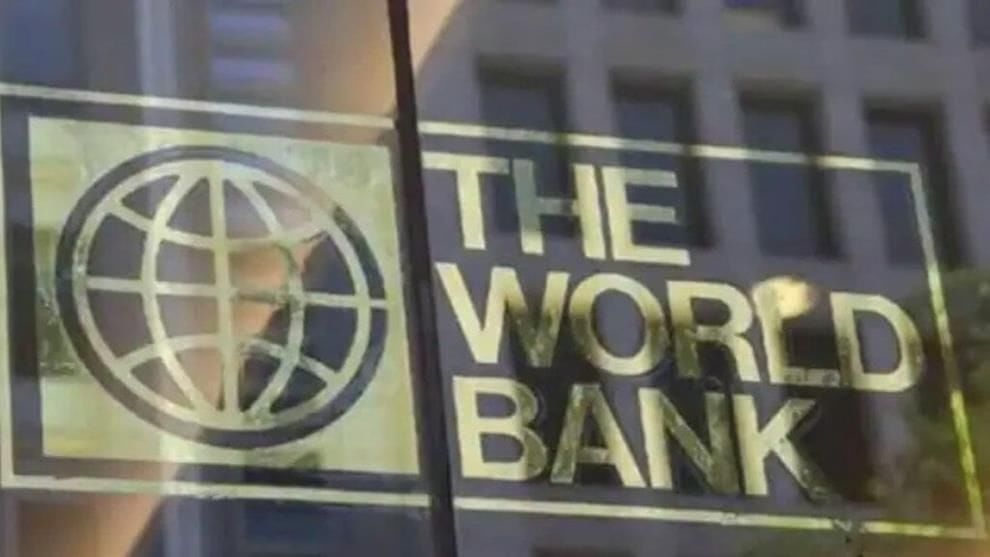 Why in News?
Why in News?
Recent discussions on inequality in India have been clouded by selective data interpretation and exaggerated claims, affecting public understanding. A controversy surrounding the World Bank’s India Poverty and Equity Brief: April 2025 highlights these issues, particularly its claims regarding extreme poverty and consumption inequality that challenge established narratives.
Key Takeaways
- The World Bank reports a significant decline in consumption inequality in India.
- Critics argue that the underlying data may underestimate true inequality.
- Improved consumption patterns indicate better living standards for the lower-income groups.
- The debate on income inequality remains complex due to the lack of reliable income data.
Additional Details
- Consumption Inequality: The consumption-based Gini coefficient dropped from 28.8 in 2011-12 to 25.5 in 2022-23, suggesting India is among the world's least unequal countries based on consumption.
- Household Consumption Expenditure Survey (HCES): This survey uses the Modified Mixed Reference Period (MMRP) methodology, which aligns with international standards, to assess consumption patterns.
- Extreme Poverty Eradication: Approximately 27 crore Indians were lifted out of extreme poverty between 2011 and 2023, as defined by the International Poverty Line of $3.
- The debate on income inequality relies on estimates from the World Inequality Lab (WIL), which some critics believe are based on flawed assumptions about household spending.
- Between 2017 and 2022, the national income share of the bottom 50% increased from 13.9% to 15%, indicating potential improvements in income distribution.
In conclusion, while the World Bank’s findings emphasize significant progress in reducing extreme poverty and consumption inequality, discussions around income inequality must be rooted in accurate data and assumptions. A balanced perspective is essential, recognizing both the achievements and ongoing challenges in India’s socio-economic landscape.
Integration of the 8th Economic Census with the 16th Population Census
Why in News?
The Ministry of Statistics and Programme Implementation (MoSPI) is currently preparing for India's 8th Economic Census, which will be integrated with the forthcoming 16th Population Census to enhance data collection efficiency.
Key Takeaways
- The Economic Census aims to provide a comprehensive database of non-agricultural economic establishments in India.
- Integration with the Population Census is intended to streamline operations and reduce costs.
- The census will commence in October 2026 for remote areas and in March 2027 for the rest of the country.
Additional Details
- Conducting Body: The Economic Census is conducted by the Ministry of Statistics and Programme Implementation (MoSPI).
- Purpose: It aims to create a detailed database covering aspects such as location, ownership, employment size, and types of economic activities.
- Key Data Captured: The census collects vital information about non-agricultural establishments, including informal units crucial for understanding employment dynamics.
- Historical Background: The Economic Census has its roots in proposals from the Visvesvaraya Committee in 1925 and was formalized by the Bowley-Robertson Committee in 1934, leading to the establishment of the Central Statistical Office (CSO) in 1951.
- Timeline of Economic Censuses: Previous censuses were conducted in 1980, 1990, 1998, 2005, 2013, and 2019-21 (7th Census). The 2nd and 3rd rounds of the Economic Census were aligned with the 1981 and 1991 Population Censuses.
- 7th Census Status: While completed in 2021, results are pending due to data quality issues related to COVID-19.
- Execution Support: MoSPI has collaborated with the Common Service Centre (CSC) network to facilitate grassroots-level implementation of the census.
- Integration Objectives: The main objective is to enhance efficiency and minimize costs by leveraging shared field operations, with enumerators documenting household-based economic activities.
- Census Schedule: The census will commence in snow-bound and remote areas on October 1, 2026, and will cover the rest of the country starting March 1, 2027.
- Preparatory Work: Committees at state and district levels have been established to oversee the planning for the 8th Census.
This integration signifies a strategic move towards better data collection practices, which could greatly benefit the understanding of India's economic landscape.
Why is Corporate Investment Lagging Behind?

Why in News?
Recently, India's industrial output growth has dropped to a nine-month low of 1.2%, raising concerns about sluggish corporate investment despite measures such as tax cuts, increased public capital expenditure, and monetary easing. This situation has reignited discussions on the factors contributing to low investment levels, with notable references to Marxist economic theories, particularly those of Rosa Luxemburg and Mikhail Tugan-Baranovsky, who stress the necessity of demand revival for economic rejuvenation.
Key Takeaways
- Slow corporate investment in India is compounded by weak consumer demand.
- Excess industrial capacity has led firms to hesitate in expanding production.
- Misinterpretations about the relationship between profits and investments are prevalent.
Additional Details
- Weak Consumer Demand: Despite improved corporate profits, investment remains low due to insufficient consumer demand. For instance, even after a significant corporate tax cut from 30% to 22% in 2019, private sector investment in machinery and intellectual property grew only 35% from FY20 to FY23, as highlighted in the 2024-25 Economic Survey.
- Excess Industrial Capacity: Many industries are operating below optimal capacity, leading to reluctance in investing in new production facilities. Following the COVID-19 pandemic, underutilized factories have resulted in firms having little incentive to expand, even with low interest rates.
- Misreading of Profit-Investment Link: The common belief that higher profits directly lead to more investment is flawed. According to economist Michał Kalecki, it is often the case that investment drives profits. Without a revival in demand, companies are cautious about investing, regardless of profitability, due to uncertainties about returns.
- Rosa Luxemburg and Mikhail Tugan-Baranovsky: Luxemburg critiqued capitalist accumulation, emphasizing that capitalists base their investment decisions on anticipated demand. Conversely, Baranovsky argued that investment can generate its own market, though this view is contested by Luxemburg's emphasis on demand-driven investment.
In conclusion, to stimulate corporate investment, it is crucial to revive demand through effective government strategies, as consumer spending and confidence are key drivers for economic growth.
The India Inequality Debate - Misinterpretation of Gini Index and the Clash of Data Credibility
Why in News?
The ongoing debate regarding inequality in India has gained attention, particularly with claims that India is one of the most equal societies globally, based on the Gini index of consumption. This controversy underscores major misinterpretations and discrepancies among various entities, including the Government of India, the World Bank, media, and independent researchers, about how inequality is assessed. The implications of this discussion are significant for data integrity, policymaking, and socio-economic analysis.
Key Takeaways
- The Gini Index measures the distribution of income, wealth, or consumption within a society.
- India's ranking as the "4th most equal society" is based on misinterpretations of the consumption Gini.
- There is no official data on income inequality in India, creating a gap in global rankings.
- Critics highlight the flawed comparisons and the need for reliable data sources.
Additional Details
- Gini Index: This index ranges from 0 to 100, where 0 indicates perfect equality and 100 indicates absolute inequality. The higher the Gini Index, the greater the inequality within a country.
- Misinterpretation of Rankings: According to the Observer Research Foundation (ORF), India was reported to have the lowest consumption Gini (25.5) in 2022-23, suggesting it is the most equal in terms of consumption.
- Government and Media Missteps: Political endorsements of the claim that India is the 4th most equal society have caused confusion between social equality and consumption equality.
- Criticism of Data Sources: The usage of synthetic data from the World Inequality Database (WID) has been criticized for its lack of credibility compared to official survey data.
- World Bank's Role: The World Bank's Poverty Inequality Platform (PIP) offers verified data but highlights contradictions by quoting WID's synthetic income Gini while presenting consumption data.
- Need for Official Surveys: The lack of official income surveys in India raises questions about the validity of inequality assessments and comparisons.
In conclusion, this debate highlights the urgent need for India to conduct official income surveys to facilitate meaningful comparisons and reflects the importance of data transparency and methodological rigor in socio-economic assessments.
Challenges in the Implementation of PLI Schemes
Why in News?
Currently, six out of the fourteen Production-Linked Incentive (PLI) schemes, including those for textiles, solar modules, IT hardware, automobiles, advanced chemical cells (ACC), and specialty steel, are experiencing slower progress than anticipated.
Key Takeaways
- Many industries face stringent eligibility criteria limiting participation.
- Establishing manufacturing bases is a lengthy process, causing delays in employment generation.
- Access to critical resources is hindered, affecting production ramp-up.
- Some sectors remain reliant on imports, limiting growth under the PLI framework.
- Slow disbursement of funds has been a significant barrier in initial years.
Additional Details
- Stringent Eligibility Norms: The high eligibility criteria restrict many companies from benefiting from PLI schemes.
- Initial Setup Challenges: Industries such as solar modules and ACC require substantial time (1.5 to 3 years) to set up, delaying job creation.
- Market Dependency: Sectors reliant on imports have not transitioned to self-sufficiency, affecting growth potential.
- Textiles Sector: High competition and stringent norms have led to reduced participation and slower growth.
- Solar Modules: With a capacity of 77.2 GW for solar modules but only 7.6 GW for solar cells as of June 2024, supply shortages have delayed projects.
- Automobiles: Initial setup challenges and fluctuating market conditions hinder overall sector progress.
- Advanced Chemical Cells (ACC): Long commissioning periods and substantial investment needs contribute to slow growth.
- IT Hardware: Despite increased funding, implementation lags behind sectors like mobile manufacturing.
To enhance the effectiveness of PLI schemes, measures such as revising eligibility criteria, increasing support for supply chains, streamlining resource access, conducting regular reviews, and encouraging ancillary industries should be considered. These steps could significantly improve participation and growth across various sectors.
Inflation Hits 77-Month Low
Why in News?
India's inflation indicators have shown a significant downward trend. The Consumer Price Index (CPI) has dropped to a remarkable 77-month low of 2.1% in June 2025, while the Wholesale Price Index (WPI) has contracted by -0.13%, marking its first decline in 20 months.
Key Takeaways
- Inflation has decreased to 2.1%, the lowest level since January 2019.
- The WPI has experienced a contraction of -0.13%.
- Food and Beverages (CPI component) registered a deflation of 0.2%, down from 8.4% in June 2024.
- WPI Food Articles saw a sharp fall of 3.75%, compared to 11.1% inflation in June 2024.
- Crude Petroleum and Natural Gas (WPI) prices contracted by 12.3%, marking the 10th consecutive month of decline.
- Inflation in Fuel and Light (CPI) eased to 2.55%, down from 2.8% in May 2025.
- Housing inflation increased marginally to 3.24%, while Pan, Tobacco, and Intoxicants remained stable at 2.4%.
Additional Details
- Consumer Price Index (CPI): Measures the change in retail prices of goods and services consumed by households.
- Wholesale Price Index (WPI): Measures wholesale prices of goods traded between businesses.
- Compiled By: CPI is compiled by the National Statistical Office (NSO), while WPI is compiled by the Office of Economic Adviser, Ministry of Commerce and Industry.
- Base Year: CPI has a base year of 2012 (with CPI for Industrial Workers using 2016), while WPI uses 2011-12.
- Coverage: CPI covers both goods and services, whereas WPI includes only goods.
- Data Collection: CPI gathers prices from 1,181 villages and 1,114 urban markets, while WPI collects data from wholesale markets and factories.
- Publication Frequency: Both indices are published monthly.
In conclusion, the significant drop in both CPI and WPI indicates a cooling inflationary trend in India's economy, which can have various implications for monetary policies and economic decision-making.
ADEETIE Scheme

Why in News?
The Union Ministry of Power has recently introduced a national initiative known as the Assistance in Deploying Energy Efficient Technologies in Industries & Establishments (ADEETIE). This scheme aims to bolster energy efficiency across various sectors, particularly focusing on Micro, Small, and Medium Enterprises (MSMEs).
Key Takeaways
- The ADEETIE scheme promotes energy efficiency to reduce energy consumption, emissions, and enhance the competitiveness of MSMEs.
- It supports India’s climate objectives, including a target to reduce emission intensity by 45% by 2030 and achieve Net Zero by 2070.
- The scheme has a budget allocation of ₹1,000 crore, specifically aiming at MSMEs, excluding large enterprises.
Additional Details
- Launch: The ADEETIE scheme was launched by the Bureau of Energy Efficiency (BEE).
- Interest Subsidy Support: MSMEs adopting energy-efficient technologies will benefit from interest subsidies on loans, which are set at 5% for small enterprises and 3% for medium enterprises.
- Digital Portal Utility: A comprehensive digital platform will serve as a one-stop portal for financing, project development, and sharing knowledge on energy-efficient solutions.
- Supported Technologies:The scheme encourages the adoption of advanced clean technologies, including:
- Automation and digital control systems
- Combustion control systems for boilers
- Methane capture technology
- Air-dyeing in textiles
- Collaboration: The scheme promotes partnerships within the industry through Memoranda of Understanding (MoUs) with significant MSME associations.
- Legal Backing: The ADEETIE scheme aligns with the Energy Conservation (Amendment) Act, 2022, which facilitates carbon markets and mandates the use of clean energy.
The ADEETIE initiative signifies a crucial step towards enhancing energy efficiency in India's MSME sector, ultimately contributing to the nation’s broader climate goals and economic sustainability.
Understanding India’s Corporate Investment Slowdown: Causes and Consequences
Why in the News?
India is currently experiencing a significant slowdown in corporate investment, a situation that persists despite various policy initiatives. Recent data indicates that industrial growth has reached a nine-month low, while private sector capital formation remains sluggish, raising concerns about the overall economic recovery.
Key Takeaways
- India's industrial recovery is slow, with corporate investment not gaining momentum after the pandemic.
- The Index of Industrial Production (IIP) has shown a growth rate of just 1.2%, marking a nine-month low.
- Despite strong corporate profits, hesitant consumer demand is affecting investment decisions.
Additional Details
- Investment Dip: Investment is inherently linked to demand for goods and services. When demand is low, companies are reluctant to invest in expanding capacity.
- Corporate Sector Hesitancy: Even with robust profits, the Indian corporate sector is cautious about investment due to weak consumer demand, as highlighted in the 2024-25 Economic Survey.
- Investment Theories: Two main perspectives exist regarding investment behavior: one suggesting that investment can stimulate profits independently of demand, and another arguing that demand constrains investment. In a slow-growth environment, firms tend to make cautious investment decisions.
- Government Investment Limitations: The Indian government has attempted to stimulate private investment through tax cuts and infrastructure spending, but these measures face challenges such as long project gestation periods and limited job creation.
- Path to Recovery: A demand-led revival is essential for corporate investment to recover. This could involve increased government spending and initiatives aimed at boosting consumer demand.
In conclusion, India's corporate investment slowdown cannot be effectively addressed through tax cuts or interest rate adjustments alone. The central issue is weak consumer demand that deters firms from investing, even when profits are robust and credit is accessible. A sustained recovery will necessitate bold fiscal policies to stimulate demand, alongside structural reforms to enhance the business environment.
Bridging the Skills Gap - India’s Employment Challenge and the Path to Workforce Readiness
Why in News?
India, despite being one of the largest producers of graduates globally, struggles to integrate its educated youth into the formal workforce. Recent data from the Employees’ Provident Fund Organisation (EPFO) and key employment reports highlight the pressing need for skilling, reskilling, and policy interventions to prepare India’s workforce for the future.
Key Takeaways
- EPFO as a crucial employment indicator for formal employment trends in India.
- A significant youth unemployment crisis, particularly among educated individuals.
- The alarming skills deficit in the digital age, affecting employability.
- Urgent need for structural and policy reforms in education and industry.
Additional Details
- EPFO: Serves as a key indicator of formal employment trends, managing retirement savings for over 7 crore workers, making it one of the largest global social security agencies.
- Post-pandemic recovery: Data from March 2025 shows that youth aged 18-25, especially those aged 18-21, now represent 18%-22% of new EPFO subscribers, indicating a rise in formal employment.
- Youth Unemployment Crisis: The India Employment Report 2024 reveals that youth make up 83% of the unemployed population in India, with the highest unemployment rates among educated individuals, especially those with higher education.
- Skills Deficit: The report indicates a severe lack of digital skills, with 75% of youth struggling to send emails with attachments and 90% lacking spreadsheet skills, highlighting a mismatch between education and job market requirements.
- Future Job Trends: According to the Future of Jobs Report 2025, 170 million new jobs will be created by 2030, while 92 million jobs are expected to be displaced, necessitating urgent action to close the skills gap.
- Structural Reforms Needed: Educational reforms should include mandatory industry-academia partnerships, accountability for job placements, and curriculum updates to include skills training in soft skills and technical areas.
India's demographic advantage could turn into a liability without matching skill readiness and effective policy-making. Coordinated actions are essential to strengthen education-employment linkages, enhance digital and vocational training, and ensure accountability in both public and private education systems.
Debate on Inequality in India
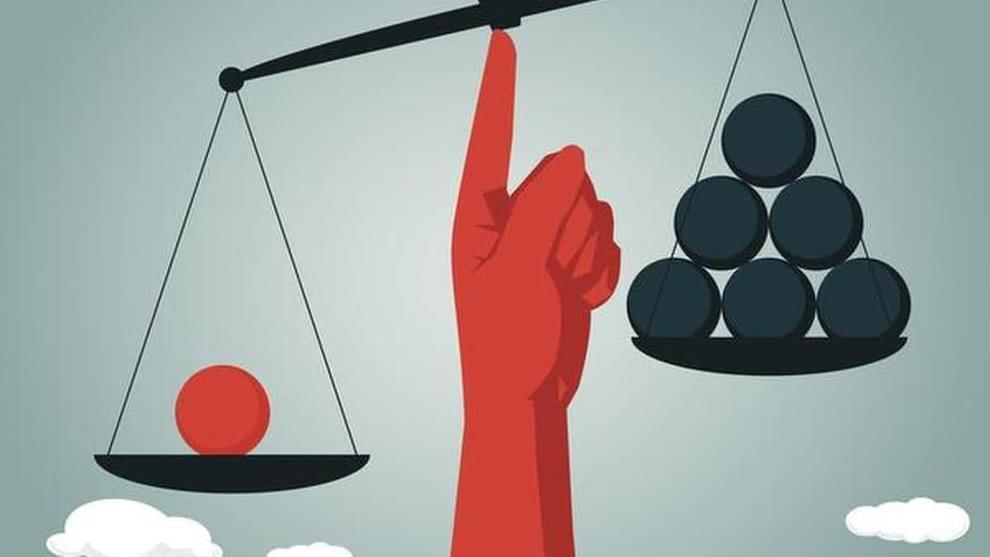 Why in News?
Why in News?
A recent World Bank report has sparked discussions by asserting that inequality in India is low and declining, based on consumption data. In contrast, various independent studies and expert analyses dispute this view, indicating significantly high and increasing levels of income and wealth inequality. This discrepancy raises questions about the reliability of the data, the methodology employed, and the implications for policy.
Key Takeaways
- The Gini coefficient is reported to have decreased from 0.288 (2011-12) to 0.255 (2022-23), suggesting one of the lowest levels of inequality globally.
- Critics argue that this reflects consumption inequality rather than true income or wealth inequality.
Additional Details
- Gini Coefficient: A statistical measure representing income or wealth inequality within a group or country, ranging from 0 (perfect equality) to 1 (perfect inequality).
- Consumption inequality is defined as the disparity in spending habits rather than income or wealth distribution.
- Data collection issues stem from Household Consumption Expenditure Surveys (HCES) for 2011-12 and 2022-23, which may not accurately capture high-end consumption and are methodologically inconsistent.
- According to the World Inequality Database (WID), the income Gini coefficient for 2022-23 stands at 0.61, while the wealth Gini is at 0.75, indicating high levels of inequality.
- The top 1% of individuals possess approximately 40% of personal wealth in India, with only a few countries having a higher concentration.
In conclusion, while the World Bank's consumption-based data might suggest a positive trend, it conceals the deeper issues of income and wealth inequality that increasingly characterize India's economic landscape. For effective policymaking, it is crucial to grasp the actual state of inequality to develop inclusive and sustainable growth strategies.
International Financial Services Centres Authority (IFSCA)
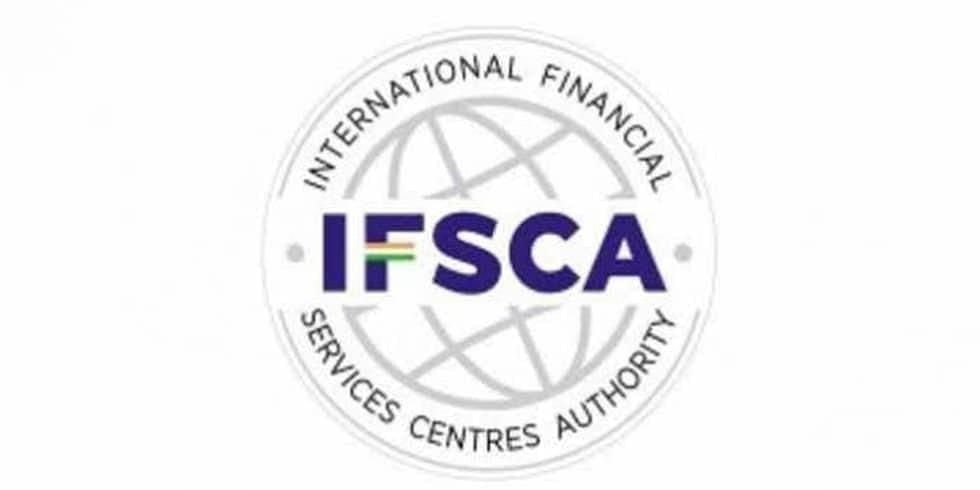 Why in News?
Why in News?
The largest privately owned bank in Taiwan, CTBC Bank, has recently applied to the International Financial Services Centres Authority (IFSCA) to establish an IFSC Banking Unit (IBU) in GIFT City, marking a significant development in the international financial landscape.
Key Takeaways
- The IFSCA is a statutory authority established under the International Financial Services Centres Authority Act, 2019.
- It serves as a unified regulatory body for financial products, services, and institutions within India's International Financial Services Centre (IFSC).
- GIFT City in Gandhinagar, Gujarat, is the location of India's first IFSC.
Additional Details
- IFSCA: This authority aims to enhance global connectivity while addressing the needs of the Indian economy, functioning as an international financial platform for the region.
- Regulatory Framework: Before the IFSCA was formed, regulatory oversight in the IFSC was the responsibility of domestic authorities such as the RBI, SEBI, PFRDA, and IRDAI.
- Composition: The IFSCA comprises nine members appointed by the central government, including a chairperson, representatives from the RBI and SEBI, and two members from the Ministry of Finance.
- Term Duration: Members of the IFSCA serve for a term of three years, which can be renewed upon reappointment.
The establishment of the IBU by CTBC Bank not only highlights the growing role of GIFT City as a financial hub but also emphasizes the strategic importance of the IFSCA in shaping India’s position in the global financial arena.
E-Truck Incentive Scheme
Why in News?
The Ministry of Heavy Industries (MHI) has recently introduced the E-Truck Incentive Scheme as part of the PM E-DRIVE initiative, aimed at providing financial incentives for electric trucks (e-trucks).
Key Takeaways
- The scheme represents the first direct government support specifically targeted at promoting clean and efficient electric trucks.
- It focuses on N2 and N3 category trucks, which have a Gross Vehicle Weight (GVW) exceeding 3.5 tonnes.
- Applicants must scrap an old diesel truck to qualify for incentives.
Additional Details
- Overview: The E-Truck Incentive Scheme is designed to facilitate the adoption of electric trucks, contributing to sustainable freight mobility.
- Target Vehicle Categories:It includes trucks with a GVW above:
- 3.5 tonnes up to 12 tonnes (N2 category)
- 12 tonnes up to 55 tonnes (N3 category)
- Incentive for Articulated Vehicles: The incentive applies only to the puller tractor and not the trailer.
- Warranty Requirements:
- Battery: 5 years or 5 lakh km, whichever comes first.
- Motor & Vehicle: 5 years or 2.5 lakh km.
- Incentive Details:
- Incentives are based on Gross Vehicle Weight (GVW) with a maximum cap of ₹9.6 lakh per e-truck.
- Support is provided as upfront discounts, reimbursed to Original Equipment Manufacturers (OEMs) via the PM E-DRIVE portal.
- Deployment Goal: The scheme aims to support the deployment of 5,600 electric trucks across India, with 1,100 trucks specifically allocated for Delhi, supported by an allocation of ₹100 crore due to high pollution levels.
- Sectoral Impact: Expected benefits include reduced fuel costs and improved air quality within sectors such as steel, ports, cement, and logistics.
The E-Truck Incentive Scheme is a significant step towards fostering an electric vehicle ecosystem in India, aiming to reduce carbon emissions and achieve Net Zero emissions by 2070.
About PM E-DRIVE Scheme:
- Launched in September 2024, the PM E-DRIVE stands for Prime Minister’s Electric Drive Revolution in Innovative Vehicle Enhancement.
- It has a total budget allocation of ₹10,900 crore over two years, focusing on various electric vehicle categories including two-wheelers, three-wheelers, electric trucks, buses, and ambulances.
Demand Incentive:
Direct demand incentives will lower the upfront costs of EVs for buyers through OEMs.
Charging Infrastructure:
- ₹2,000 crore has been allocated to establish 72,300 public charging stations across the country.
- This includes fast chargers for four-wheelers, buses, two-wheelers, and three-wheelers.
Digital E-Voucher System:
Incentives will be claimed through Aadhaar-authenticated e-vouchers, ensuring transparency through digital signatures from both buyers and dealers.
Vehicle Scrappage Mandate:
Scrapping old vehicles is mandatory to claim certain incentives, promoting fleet modernization.
|
173 videos|487 docs|159 tests
|
FAQs on Economic Development (Part 1): July 2025 UPSC Current Affairs - Indian Economy for UPSC CSE
| 1. What is the Dorjilung Hydropower Project and its significance in India's energy sector? |  |
| 2. How does the Skill Impact Bond operate in promoting workforce development? |  |
| 3. What are the potential impacts of India's rethinking of its China blockade on technology manufacturing? |  |
| 4. What factors contribute to the projected boom in India's insurance sector by 2030? |  |
| 5. What are stable coins and how do they differ from traditional cryptocurrencies? |  |
















